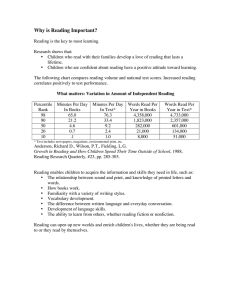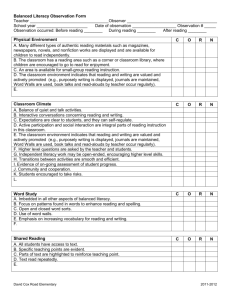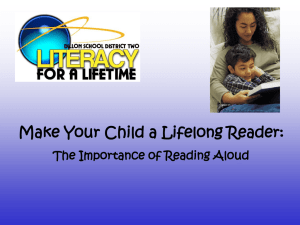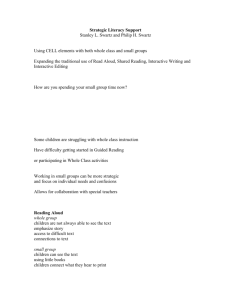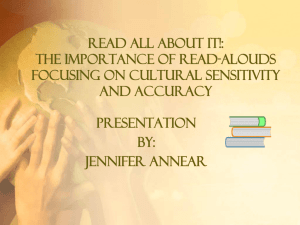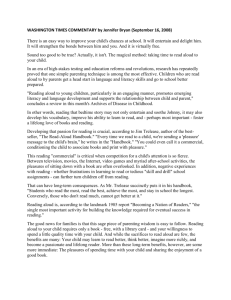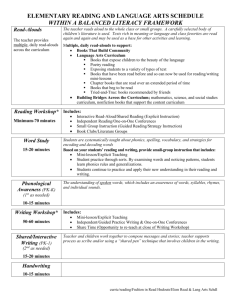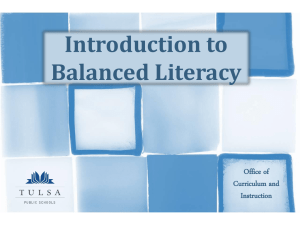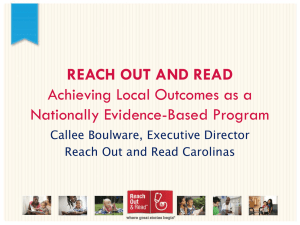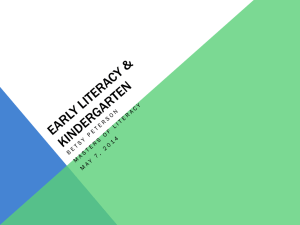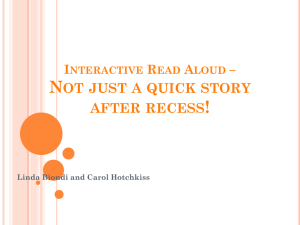why-read-aloud-to-studentsppt3
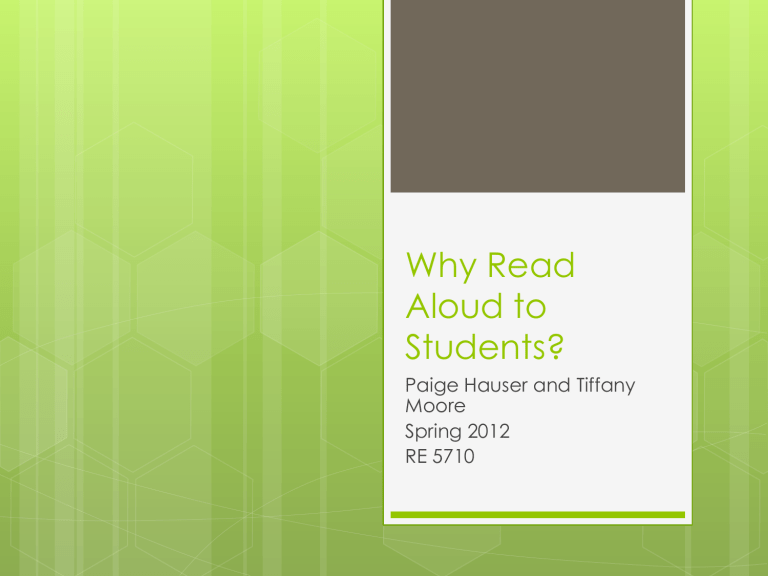
Why Read
Aloud to
Students?
Paige Hauser and Tiffany
Moore
Spring 2012
RE 5710
Our Interest
Research to support the importance of read aloud
Information about read aloud to foster student interest in reading
Benefits of using multi-cultural literature
Effective methods for read aloud instruction
Optimizing the Read
Aloud Experience
Hoffman, J. L. (2011). Co-constructing Meaning:
Interactive Literary Discussions in Kindergarten Read-
Alouds. Reading Teacher, 65(3), 183-194.
Identified 4 instructional supports for helping students achieve higher order interpretations of text:
Encourage Student Talk
Strategically help students recapture meaning when misconceptions arise
Help students interpret text without imposing their ideas
Shift focus from literal to interpretive
Repeated Read Aloud
1 st Read Aloud-Children are listeners and contribute very little.
2 nd Read Aloud-Read the story and delve deeper, going beyond story elements.
3 rd Read Aloud-Review vocabulary words.
Students are able to use analytic talk when discussing the story, instead of simply retelling the events.
Non-fiction Read Aloud
Know your objectives
Use a variety of non-fiction subgenres
Ask open-ended questions
Follow-up with writing activities
Teach listening skills
Help students identify genre before reading
K-W-L charts
Model non-fiction retells and then shift to
Supporting Vocabulary
Growth
Rich instruction is the best method when teaching vocabulary
Scaffold from previously learned vocabulary
Students apply learned vocabulary to support comprehension and speak expressively
Critical Literacy
Understanding the benefits of multi-cultural literacy
Benefits of Critical Literacy
Develop a deeper understanding of the world around, particularly social topics
Develop a voice on important social issues
Make critical connections to read aloud texts, which sharpens their thinking and reasoning skills
Provides exposure to many types of literature, while teaching them to think critically about stories read
Critical Literacy and Multi-
Cultural Texts
Student awareness increased about “values, beliefs and social practices of cultures other than their own” (Evans, 97).
Developed a deeper understanding and appreciation of their own culture
Developed a deeper understanding of issues related to prejudice, bias, and tolerance
References
Evans, S. (2010). The Role of Multicultural
Literature Interactive Read-Alouds on
Student Perspectives Toward Diversity.
Journal Of Research In Innovative
Teaching, 3(1), 92-104.
Hoffman, J. L. (2011). Coconstructing
Meaning: Interactive Literary Discussions in
Kindergarten Read-Alouds. Reading
Teacher, 65(3), 183-194.
References, Continued
Maynard, K. L., Pullen, P. C., and Coyne, M. D. (2010).
Teaching vocabulary to first-grade students through repeated shared storybook reading: A comparison of rich and basic instruction to incidental exposure.
Literacy, Research and Instruction, 49, 209-242.
McGee, L. M., & Schickedanz, J. A. (2007). Repeated interactive read-alouds in preschool and kindergarten. Reading Teacher, 60(8), 742-751.
Meller W, Richardson D, Hatch J. Using Read-Alouds with Critical Literacy Literature in K-3 Classrooms. YC:
Young Children [serial online]. November
2009;64(6):76-78. Available from: Education Research
Complete, Ipswich, MA. Accessed February 19, 2012.
References Continued
Press, M., Henenbers, E., & Getman, D. (2011).
Nonfiction Read Alouds: The Why of and How To.
California Reader, 45(1), 36-43.
Santoro, L., Chard, D. J., Howard, L., & Baker, S. K.
(2008). Making the Very Most of Classroom Read-
Alouds to Promote Comprehension and
Vocabulary. Reading Teacher, 61(5), 396-408.
Shedd M, Duke N. The Power of Planning
Developing Effective Read-Alouds. YC: Young
Children [serial online]. November 2008;63(6):22-
27. Available from: Education Research Complete,
Ipswich, MA. Accessed March 1, 2012.
